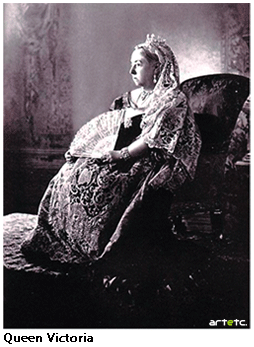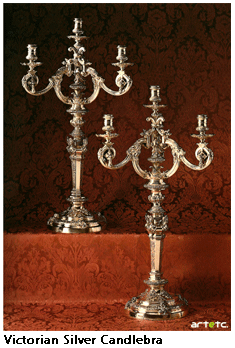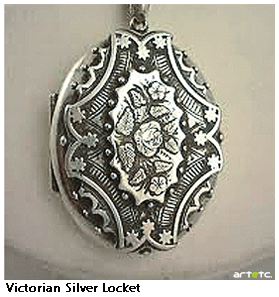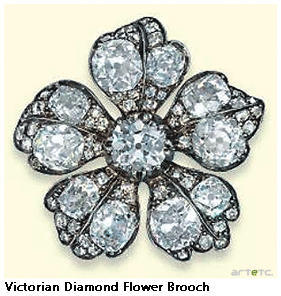- Publisher's Note
- Editorial
- Looking from the Other Side
- Women in Rabindranath Tagore's Paintings
- Ramkinkar Baij's Santhal Family
- The Birth of Freedom in Moments of Confinement
- Jamini Roy's Art in Retrospect
- The Great Journey of Shapes: Collages of Nandalal Bose
- Haripura Posters by Nandalal Bose: The Context and the Content
- The Post-1960s Scenario in the Art of Bengal
- Art Practice in and Around Kolkata
- Social Concern and Protest
- The Dangers of Deifications
- Gobardhan Ash: The Committed Artist of 1940-s
- Gopal Ghose
- Painting of Dharmanarayan Dasgupta: Social Critique through Fantasy and Satire
- Asit Mondal: Eloquence of Lines
- The Experiential and Aesthetic Works of Samindranath Majumdar
- Luke Jerram: Investigating the Acoustics of Architecture
- Miho Museum: A Structure Embedded in the Landscape
- Antique Victorian Silver
- Up to 78 Million American Dollars1 !
- Random Strokes
- Are We Looking At the Rise of Bengal
- Art Basel and the Questions it Threw Up
- What Happened and What's Forthcoming
- Art Events Kolkata, May – June 2012
- Mumbai Art Sighting
- Delhi Dias
- Art Bengaluru
- Preview June, 2012 – July, 2012
- In the News, June 2012
ART news & views
Antique Victorian Silver
Issue No: 30 Month: 7 Year: 2012
by Anurima Sen
Silver Artifacts
 When one talks about taking an active interest in antique silver, it is assumed, quite naturally that the person has more than a passing interest in the Victorian era. The Victorian era, as the name suggests, spans from 1837 to 1901: the reign of Queen Victoria. It is during this period that craftsmen slowly shied away from using pewter, to silver plating with either pure or mixed silver. The interest generated in this hitherto humble metal stemmed from a desire to own objects of beauty which were not necessarily fashioned out of expensive metals like gold.
When one talks about taking an active interest in antique silver, it is assumed, quite naturally that the person has more than a passing interest in the Victorian era. The Victorian era, as the name suggests, spans from 1837 to 1901: the reign of Queen Victoria. It is during this period that craftsmen slowly shied away from using pewter, to silver plating with either pure or mixed silver. The interest generated in this hitherto humble metal stemmed from a desire to own objects of beauty which were not necessarily fashioned out of expensive metals like gold.
The standard silver plating procedure used a low level of pure silver in the mix, but there were processes such as triple and quadruple silver plating which indicated that three or four times the amount of pure silver was included. The search for these rare quadruple silver plated items is akin to the search for the Holy Grail when it comes to most of the antique silver collectors out there. The standard plated ones surface in the market with far more regularity.
One enjoyable fact about collecting antique silver is that you would never be plagued by monotony. Manufacturers across Europe produced such a wide variety of items that it fulfilled all budget requirements as well as needs of the people. Ordinary household items were transformed into works of art, which have with time become collectibles. There are some sterling silver items, of distinguished beauty, that were manufactured for investment purposes. In more cases than not, these items have a fascinating history that speaks of the households from which they hark. A variety of websites have mushroomed all over the Internet in the last few years, providing a wide gamut of information as well as a selection of exquisite silverware. One of these is the website belonging to A Pash & Sons. Their shop, located in London, has been selling antique silver objects since 1926. Their selection of rare and decorative silver is quite unparalleled in the market today. One of their most prominent exhibitions is the ten-foot long silver garniture de table that once belonged to Queen Adelaide and was made by Garrard's. Garrard and Co. was founded in London in the year 1735, and was appointed the Crown Jeweller of the United Kingdom. Therefore, such a table is indeed rare if not entirely unique: royal silver is seldom made available in the market.
The story goes that the mirror plateau (the large mirrored tray) as well as the dramatic pair of seven-branch candelabra were a gift from Queen Adelaide to Earl Howe, née Richard William Penn Curzon, on 11th December 1796. The Earl later added a sumptuous ten light candelabrum in 1852 celebrating his new title and his ancestry. According to The Gentleman's Gazette, “the set is sold with the original custom-made wooden storage trunks! This set was very delicately and opulently decorated with leaves, a crown and various berries. Most people today would not have a dining table long enough or tall enough ceilings to appropriately display such a garniture de table not to mention the taste for such ostentatious display!” It is tagged at a price of £1,900,000, and for once it does not seem like a grand amount for something as loaded with history and as beautiful as this!
Their website, very helpfully, informs a lay person regarding the English hallmarking system: a skill that will come very handy while attempting to purchase antique silver. The system has evolved considerably: from the Maker's Mark, the Lion Passant, Assay office mark, the Date Letter to the Duty Mark.
Silver Jewellery
 Another aspect of Victorian silver that has attracted a lot of attention is jewellery. Jewellery, like every form of ornamentation, reflects the taste and circumstances of its period. Queen Victoria's reign was marked by optimism and a belief in progress. A great quantity of jewellery was produced and worn, it being the ultimate symbol of wealth in a fiercely competitive society. From the bourgeoisie constantly rose a category of the newly-rich, people who were desperate to prove their claim to elitism, and these people furnished their households and ornamented themselves with everything that they could lay their hands on. The Queen herself was immensely fond of jewellery and is known to have sent out numerous gifts of brooches, bracelets and necklaces.
Another aspect of Victorian silver that has attracted a lot of attention is jewellery. Jewellery, like every form of ornamentation, reflects the taste and circumstances of its period. Queen Victoria's reign was marked by optimism and a belief in progress. A great quantity of jewellery was produced and worn, it being the ultimate symbol of wealth in a fiercely competitive society. From the bourgeoisie constantly rose a category of the newly-rich, people who were desperate to prove their claim to elitism, and these people furnished their households and ornamented themselves with everything that they could lay their hands on. The Queen herself was immensely fond of jewellery and is known to have sent out numerous gifts of brooches, bracelets and necklaces.
By the 1880s, silver became a popular metal, and heavy necklaces were made of it. In fact, Queen Victoria chose one of these as a present to Jenny Lind. A silver chain and heavy engraved locket were the most fashionable ornaments for everyday wear. Silver brooches, engraved by hand, or more often stamped out by machinery, bore names, dates, monograms, or mottos. The Queen had such a tremendous impact on the era in which she lived that whatever she chose to wear became news, and hence, became fashion. Because her subjects adored her, they tried to emulate her as much as possible.
In most photographs of the Queen, she is seen wearing heavy necklaces and earrings that contain diamonds, set either in gold or in silver.
Piqués (tortoiseshell inlaid with tiny dots of gold or silver) became a rage once more. Originally, the French Huguenots brought the craft with them to England in the seventeenth century, and had produced many beautiful combs and other objects of ornamentation. Enameled jewellery also continually gained reputation during this era. Gold and silver provided an excellent base for all the enameling techniques.


There is thankfully a great deal of Victorian silver jewellery still available. Silver skyrocketed to popularity in and around 1870; by 1880 the craze had somewhat worn off. But within a span of ten years such a great variety of jewellery was produced that it defies logic! Silver chains, massive lockets, ivy leaves, arrows, forget-me-nots, bangle bracelets, silver-mounted Scotch agate pins, earrings, jointed bracelets with lock-and-key closing and much more were steadily manufactured, bought and proudly flaunted during those years.
 Later in the century, around 1900, silver made a more humble comeback with smaller “sentimental pins”. Sometimes they bore phrases or quotes from the Bible for the overtly religious, some had cross-heart-and-anchor charms (which stood for faith, hope and charity), name pins, bar pins with ivy, arrows, hearts and flowers and so on. Victoria “silver anniversary” mementos came out in 1887, celebrating the Queen's fiftieth year of reign, and they became very trendy.
Later in the century, around 1900, silver made a more humble comeback with smaller “sentimental pins”. Sometimes they bore phrases or quotes from the Bible for the overtly religious, some had cross-heart-and-anchor charms (which stood for faith, hope and charity), name pins, bar pins with ivy, arrows, hearts and flowers and so on. Victoria “silver anniversary” mementos came out in 1887, celebrating the Queen's fiftieth year of reign, and they became very trendy.
Soon followed the Art Nouveau movement, in the late nineteenth century, and we all know how this particular movement adored silver! However, a word of caution: several reproductions are available in the market, all of them claiming to be real Art Nouveau items. When in doubt regarding the pedigree of any object, no matter how fancy, do not buy it. It is nigh impossible for the untrained eye to tell the difference between a genuine Victorian artifact and a cheaper replica from a later age. There are however a few guidelines that might help a novice along, such as, keeping an eye out for elaborate designs. In general, household Victorian silver is known for its intricate designs combining both flora and fauna in equal measure. But, as you all know, design is something that can be readily copied. One dead giveaway for these goods would be the “quadruple plated” marking that was placed on top-of-the-line goods.
Victorian Silver at Auction
Currently, on sale at Christie's, is a Victorian diamond flower brooch. It has a cushion-cut diamond centre with pavé-set old-cut diamond five petals surrounding it, and is mounted in silver and gold. Belonging to circa 1860, the estimated price for this brooch (Sale 5388/ Lot 43) is £8,000 - £12,000. Another Victorian diamond pendant (Sale 5388, Lot 40) set with old, cushion-cut diamonds and mounted in silver and gold has been priced at £8,000 - £12,000.
As for old (and memorable) auctions, a Victorian natural pearl and diamond silver brooch (bearing the lot description “Of target design, the bouton-shaped natural pearl weighing 14.12 carats to the two row old-cut diamond openwork surround, mounted in silver and gold, circa 1880, 3.3cm wide. Accompanied by report no. 04627 dated 7 October 2011 from the Gem & Pearl Laboratory, London, stating that the pearl is natural, saltwater”) was sold on 29th November, 2011 for a sum of £48,050!
On 8 June, 2011, a pair of Victorian diamond ear pendants fetched a sum of £37,250. A pair of Victorian silver-mounted ibex-horn smoker's companions bearing the mark of Sampson Mordan, London, 1884, was sold on 9 December, 2011, for a sum of £17,500. Unusual items include a Victorian silver kettle, stand and lamp (bearing the mark of Charles Stuart Harris, London, 1880) sold at the aforementioned auction, which fetched a sum of £2,125 (the lot description of which reads, “In the George II style, the kettle globular, engraved at the shoulder with a band of strapwork, with an overhead part-raffia covered swing handle, the hinged cover with ivory finial, engraved on each side with initials within a foliage border, the stand on three scroll legs supporting the lamp, marked under kettle and lamp, inside covers and on handle”) and a Victorian silver and enamel combination vesta-case pocket knife which was sold for £938.